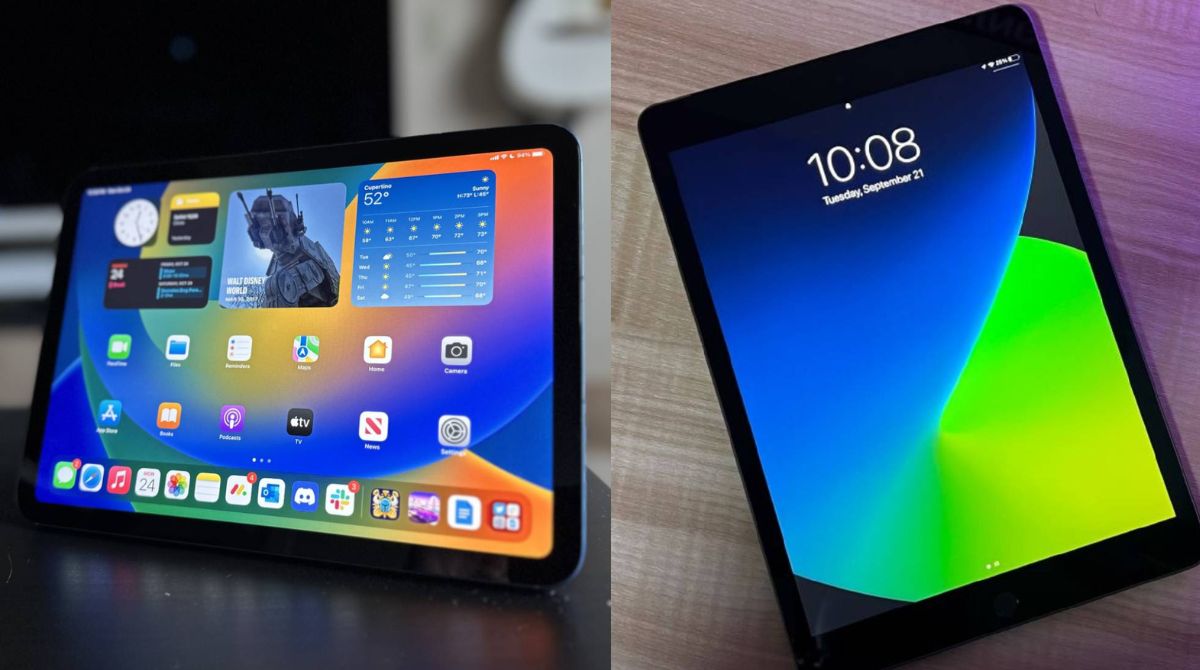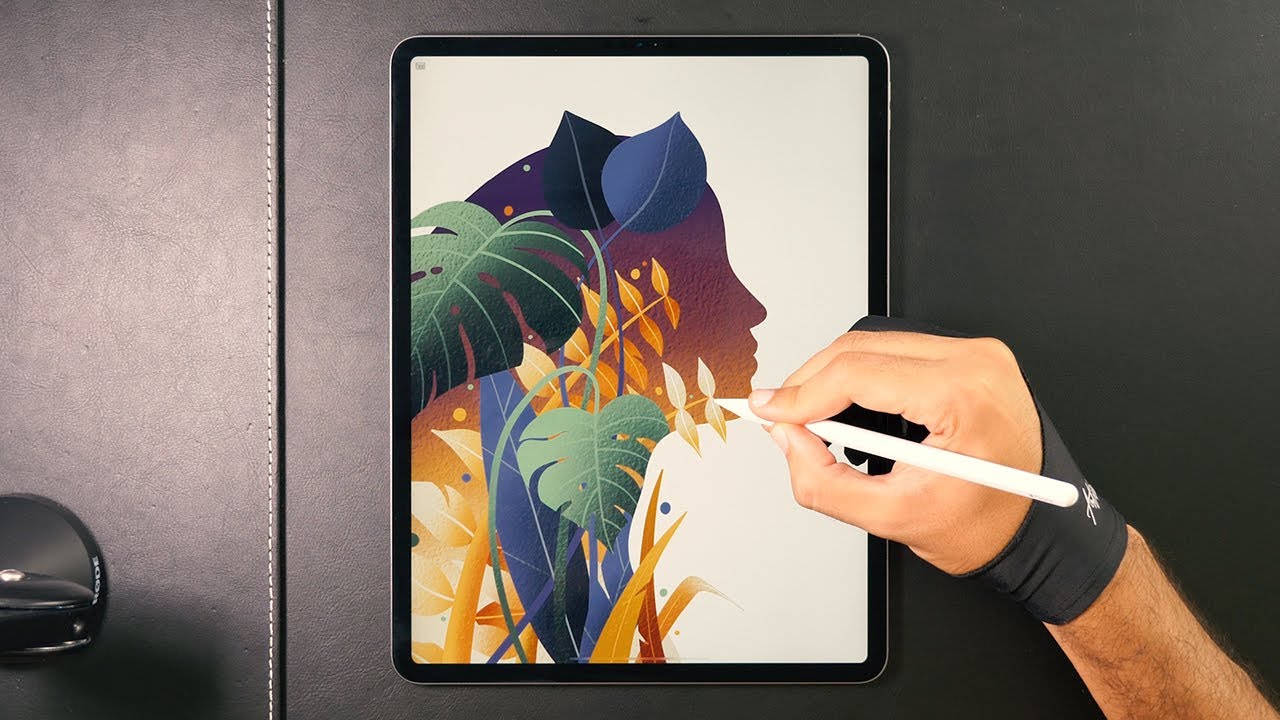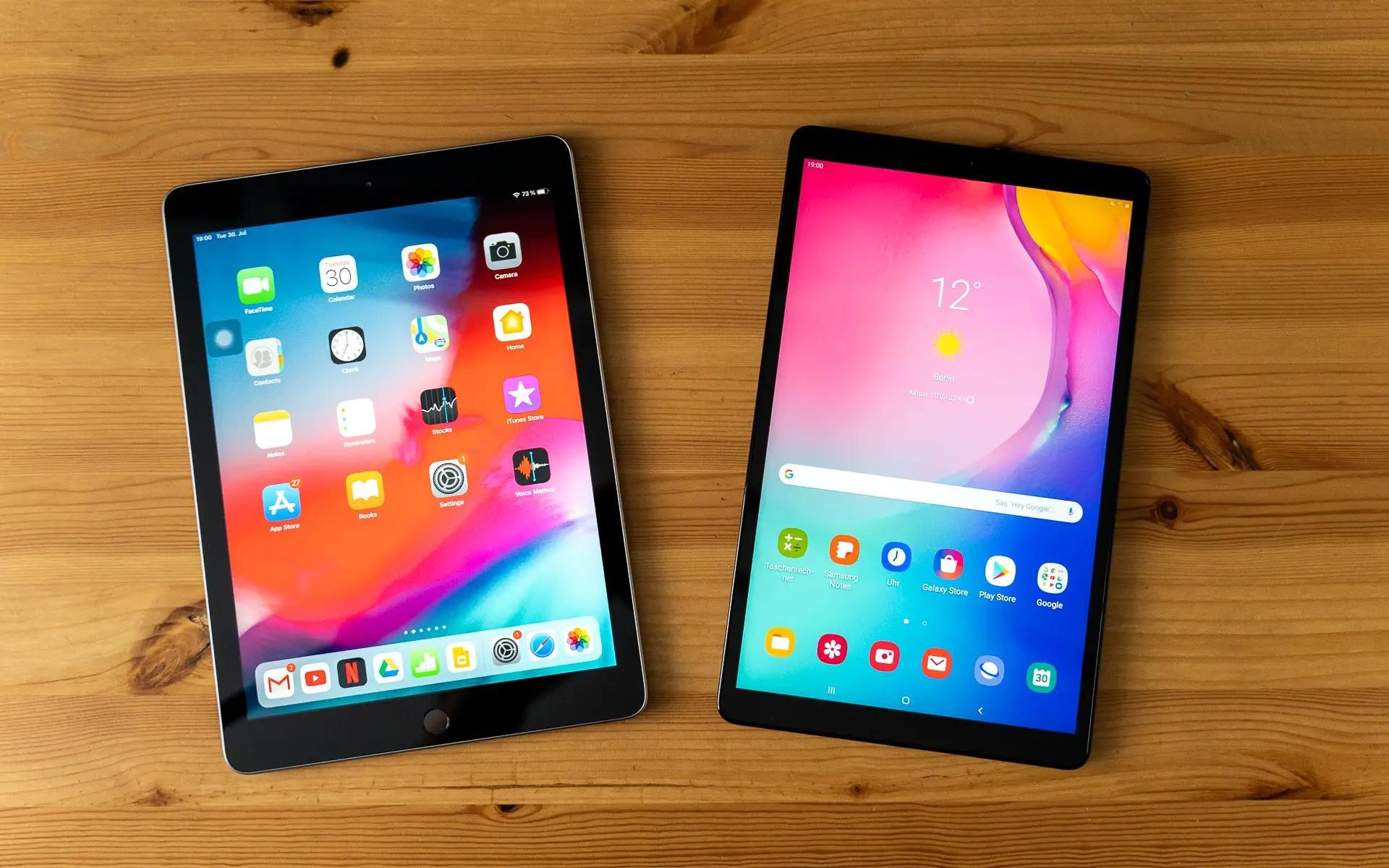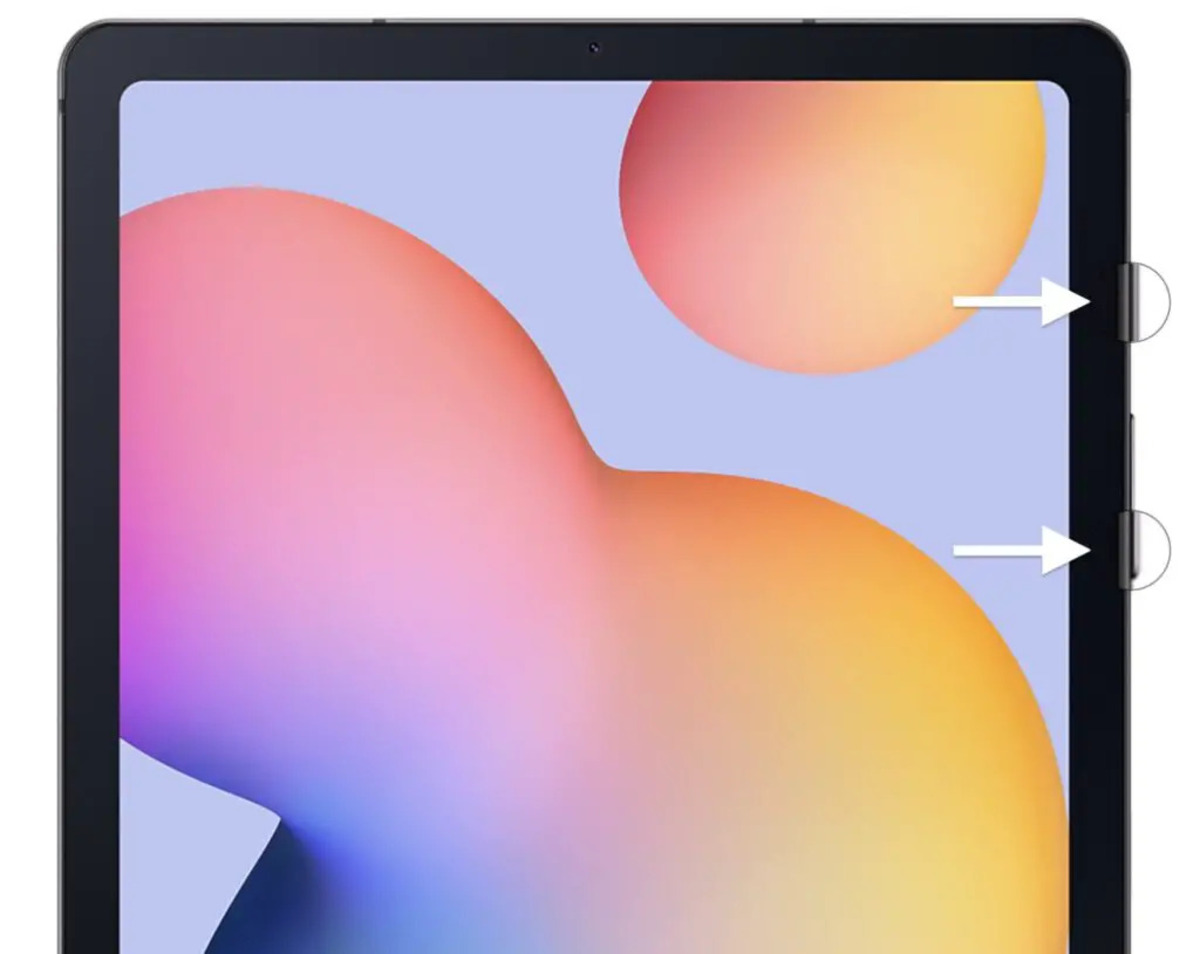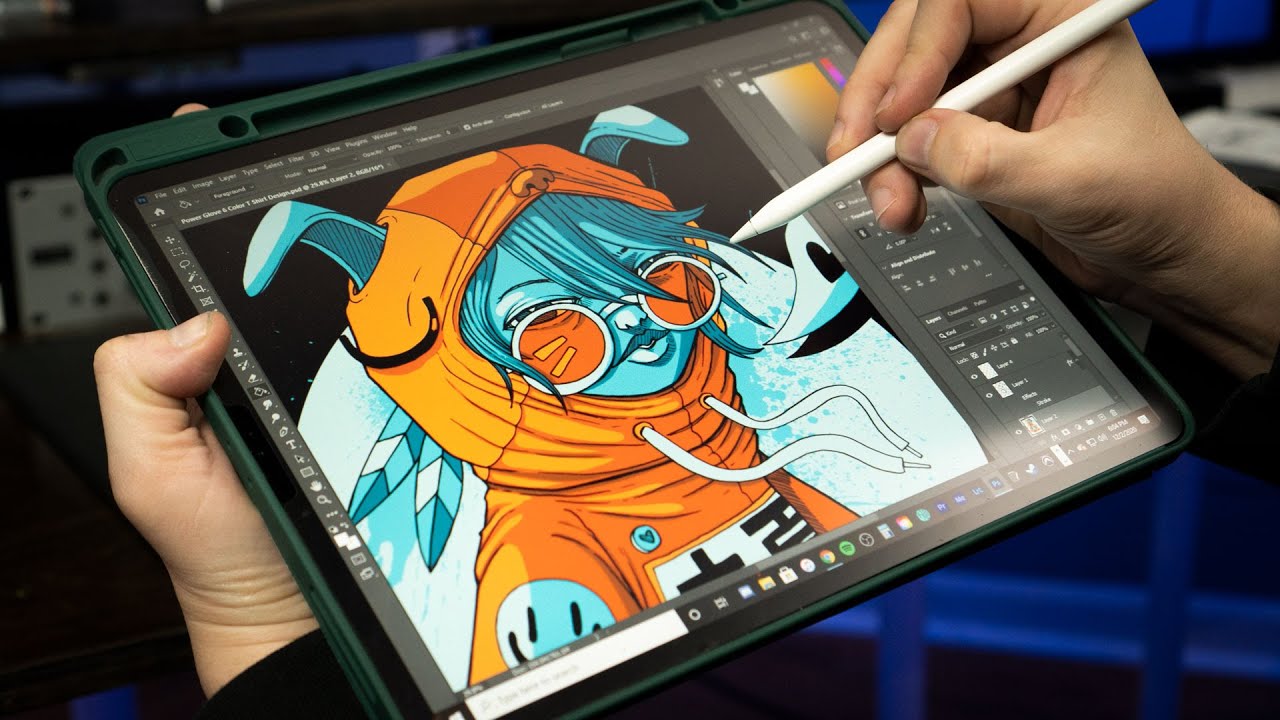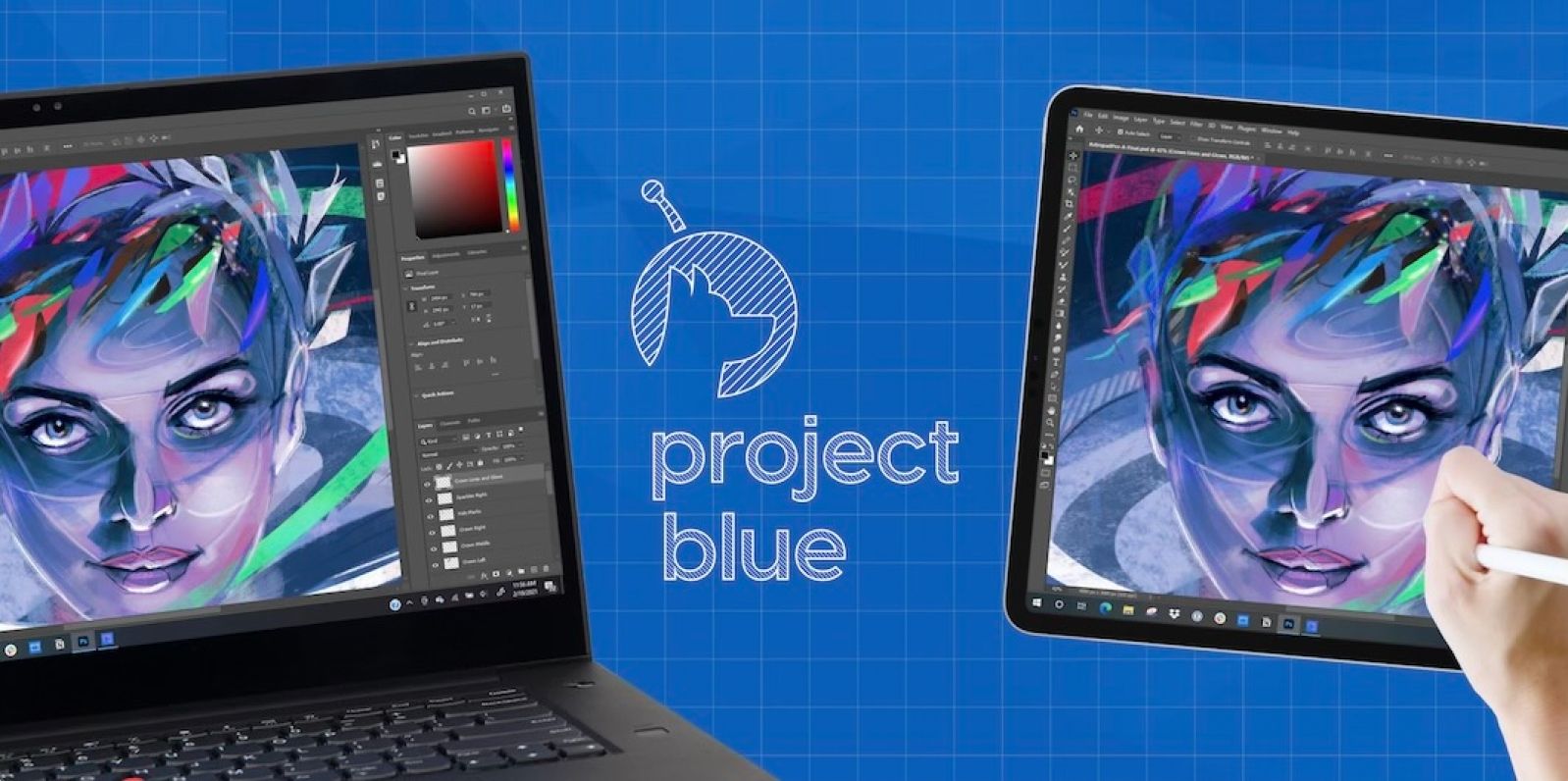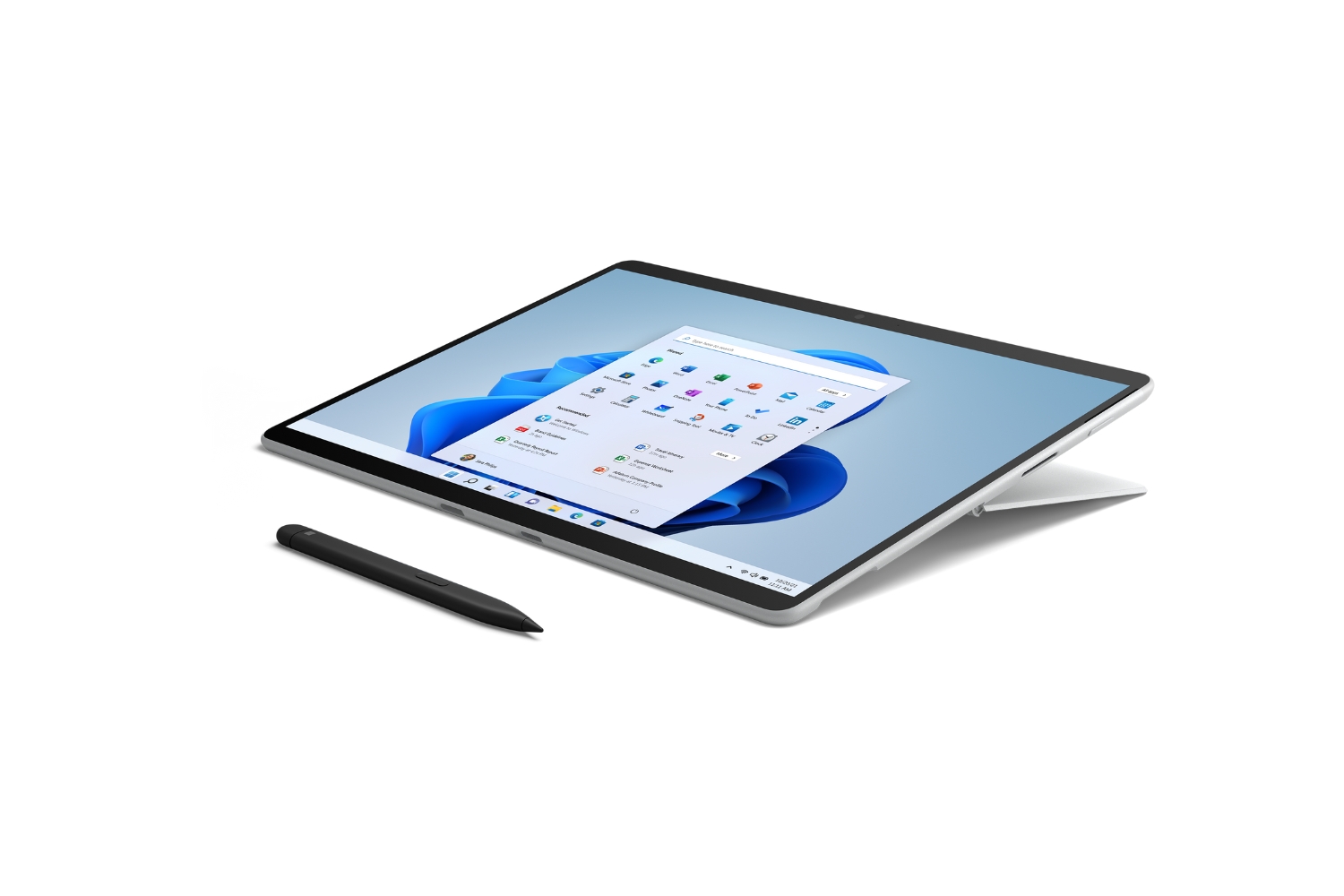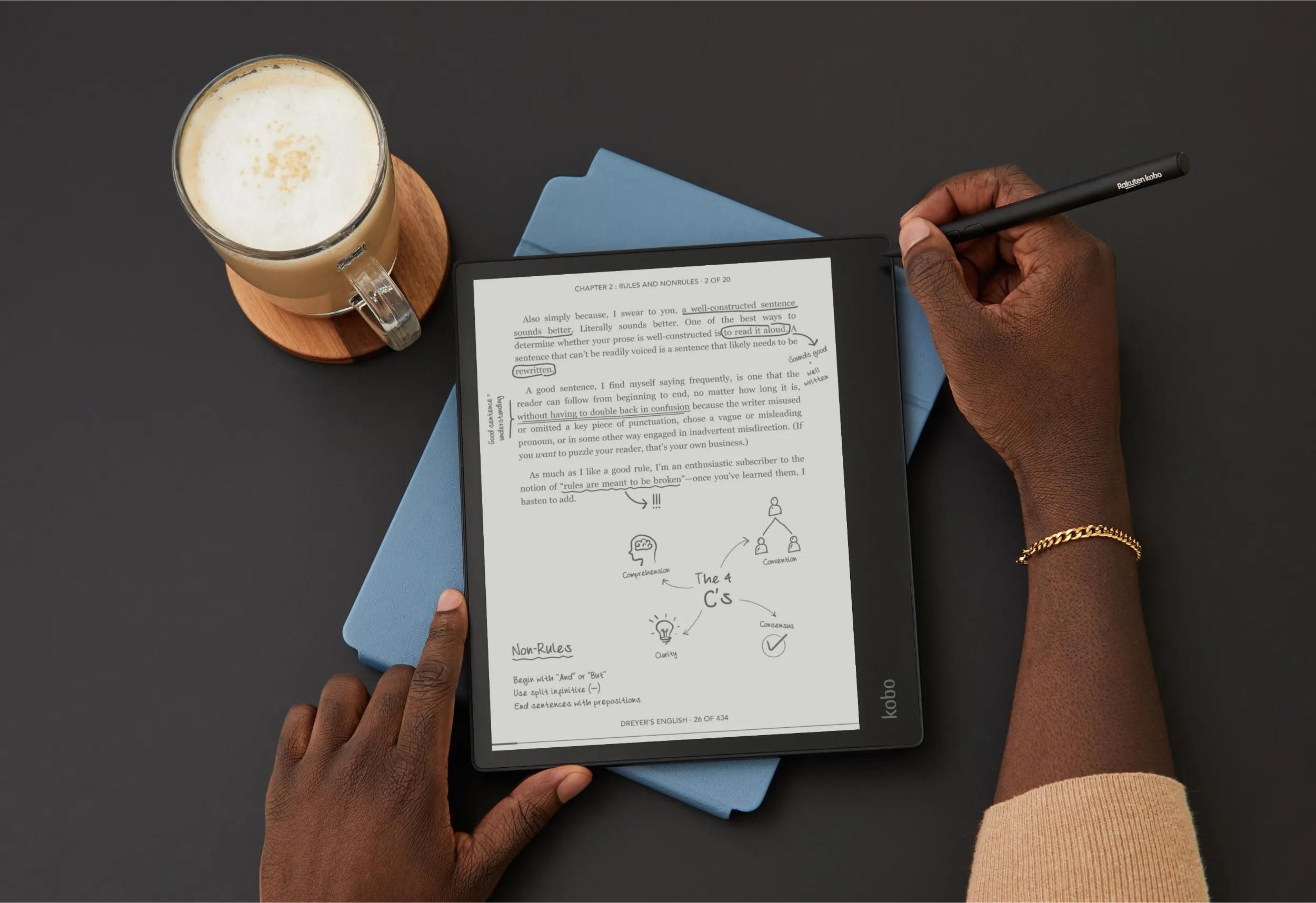Introduction
Welcome to the world of portable computing devices! In today’s technologically advanced era, tablets and iPads have become increasingly popular and prevalent. These devices offer a convenient and portable way to access information, browse the internet, play games, watch videos, and perform various other tasks. However, many people use the terms “tablet” and “iPad” interchangeably, without fully understanding the differences between the two. In this article, we will explore the distinctions between tablets and iPads, as well as their key features, pros, and cons, to help you make an informed decision when choosing between the two.
Tablets, in general, refer to a broad category of portable computing devices that feature a touchscreen display and are designed to be held in one hand or placed on a flat surface. They typically run on operating systems such as Android or Windows, and offer a wide range of functionalities. On the other hand, iPads are a specific line of tablets manufactured by Apple Inc. that run on their proprietary operating system, iOS.
While tablets and iPads share some similarities, they also have distinct differences in terms of hardware, software, and overall user experience. In the following sections, we will delve deeper into these similarities and differences, and explore the key features, pros, and cons of both tablets and iPads. So, let’s get started and unravel the world of tablets and iPads to find out which one suits your needs and preferences!
What is a Tablet?
A tablet is a portable computing device that typically resembles a rectangular slab with a touchscreen display. It is designed to offer functionalities similar to a laptop or a desktop computer, but in a smaller and more portable form. Tablets are versatile devices that can be used for various purposes, such as browsing the internet, checking emails, watching movies, playing games, reading e-books, and even creating content.
Tablets usually run on operating systems like Android or Windows, which provide a user-friendly interface and access to a wide range of applications through their respective app stores. These devices offer connectivity options, such as Wi-Fi or cellular data, allowing users to stay connected wherever they go. Some tablets also come with additional features like cameras, expandable storage, and support for accessories like stylus pens or keyboard attachments.
The touchscreen display is one of the defining features of tablets. It allows users to interact with the device by simply tapping, swiping, or pinching on the screen. This intuitive and user-friendly interface makes tablets accessible to people of all ages and tech-savviness levels. Tablets are lightweight and easy to carry, making them ideal for on-the-go use, whether it’s for work, entertainment, or educational purposes.
Tablets come in various sizes, ranging from compact 7-inch models to larger 10-inch or even 12-inch devices. The size of the tablet impacts factors such as portability, screen real estate, and overall user experience. Additionally, tablets offer different levels of processing power and storage capacity, allowing users to choose a device that caters to their specific needs and budget.
In summary, a tablet is a portable and versatile computing device that offers a range of functionalities and features in a compact and user-friendly package. It provides a convenient way to access information, entertain oneself, and stay connected on the go.
What is an iPad?
An iPad is a line of tablets developed and manufactured by Apple Inc. It runs on Apple’s proprietary operating system, iOS, which is specifically designed for their devices. The iPad is known for its sleek design, powerful performance, and seamless integration with Apple’s ecosystem of products and services.
The iPad offers a range of features and functionalities that make it a versatile tool for work, entertainment, and creativity. It features a high-resolution touchscreen display, providing vivid visuals and smooth touch response. The iPad comes in different sizes, including the standard 9.7-inch model, the compact iPad mini, and the larger iPad Pro versions, which cater to different user preferences and use cases.
One of the key aspects that sets the iPad apart from other tablets is its ecosystem of apps and services. The App Store offers a vast selection of applications optimized specifically for the iPad, ranging from productivity tools to creative software and immersive games. Additionally, iPad users have access to Apple’s services like iCloud, Apple Music, and Apple Books, which seamlessly sync across Apple devices and enhance the overall user experience.
Apple’s commitment to user privacy and security is another distinguishing factor of the iPad. iOS, the operating system that powers the iPad, includes built-in security features such as Face ID or Touch ID for secure authentication and encryption of user data. This provides users with peace of mind when it comes to protecting their personal information and sensitive data.
The iPad is also known for its performance capabilities. Equipped with Apple’s powerful A-series processors, the iPad delivers fast and fluid performance, enabling smooth multitasking, gaming, and content creation. The device also boasts impressive battery life, allowing users to enjoy extended usage without frequently needing to recharge.
Furthermore, the iPad offers support for accessories that enhance its functionality. The Apple Pencil, for instance, allows for precise drawing, note-taking, and creative expression on the iPad’s display. Additionally, keyboard attachments and smart covers enable users to transform their iPad into a productivity powerhouse for tasks like typing, editing, and working on-the-go.
In summary, an iPad is a premium tablet offered by Apple Inc., running on the iOS operating system. It provides a seamless user experience, powerful performance, and access to a wide range of optimized applications and services. The iPad is an ideal choice for those seeking a beautifully designed and highly capable tablet that integrates seamlessly with the Apple ecosystem.
Similarities between Tablets and iPads
While tablets and iPads have distinct differences, they also share several similarities. Understanding these similarities can help you grasp the fundamental features and functionalities that both devices offer. Let’s explore some of the key commonalities between tablets and iPads:
1. Touchscreen Interface: Both tablets and iPads feature a touchscreen interface, allowing users to interact directly with the device by tapping, swiping, and using gestures.
2. Portable Design: Tablets and iPads are designed to be lightweight and portable, making them easy to carry and use on the go.
3. App Store Accessibility: Both devices provide access to their respective app stores, where users can download a wide variety of applications tailored for their needs, including productivity tools, entertainment apps, and more.
4. Internet Connectivity: Tablets and iPads offer connectivity options like Wi-Fi and cellular data, allowing users to access the internet, browse websites, and use online services.
5. Multimedia Capabilities: Both devices are multimedia powerhouses, capable of playing videos, music, and displaying images with high quality and clarity.
6. Camera Functionality: Tablets and iPads are equipped with built-in cameras, enabling users to capture photos and videos, as well as engage in video calls and virtual meetings.
7. Battery Life: Both devices typically offer long battery life, allowing users to use them for extended periods without needing frequent recharging.
8. Productivity Tools: Tablets and iPads come with various productivity tools, such as document editors, note-taking apps, and email clients, making them suitable for work-related tasks.
9. Expandable Storage: Many tablets and iPads offer options for expandable storage through memory cards or external drives, allowing users to store and access large amounts of data.
These similarities highlight the core functionalities and features that tablets and iPads share, making them versatile and capable companions for a wide range of tasks and activities.
Differences between Tablets and iPads
While tablets and iPads have similarities, there are also notable differences that set them apart. These differences lie in areas such as hardware, software, ecosystem, and user experience. Let’s explore some of the key distinctions between tablets and iPads:
1. Operating System: Tablets generally run on Android or Windows operating systems, whereas iPads run on Apple’s proprietary iOS. Each operating system offers a unique user interface and access to different app ecosystems.
2. Design: iPads tend to have a sleek, minimalist design with a single physical home button (or none in recent models), while tablets from various manufacturers may have different designs and physical button placements.
3. Ecosystem Integration: iPads are tightly integrated with Apple’s ecosystem, providing seamless synchronization with other Apple devices like iPhones and Macs. This integration allows for features like Handoff, iCloud synchronization, and continuity in using apps across devices.
4. App Selection: The App Store offers a wide range of apps specifically designed for iPads, taking advantage of the device’s capabilities. On the other hand, the app selection for tablets may vary depending on the operating system and manufacturer.
5. Pricing: In general, iPads tend to be more expensive than tablets due to Apple’s premium branding and quality. Tablets from other manufacturers often provide more affordable options with varying levels of features and performance.
6. Hardware and Performance: iPads are known for their powerful hardware, including Apple’s custom-designed processors, which deliver excellent performance and graphics capabilities. Tablets, on the other hand, may have a wider range of hardware configurations and performance levels, depending on the brand and model.
7. Accessories: Apple offers a range of proprietary accessories for iPads, such as the Apple Pencil and Smart Keyboard, which are specifically designed for seamless integration with the device. While tablets may have accessory options, they may not have the same level of compatibility and integration.
8. User Interface: The user interface of iPads is optimized for touch interaction, with intuitive gestures and easy navigation. Tablets may have variations in their user interfaces depending on the operating system and manufacturer’s customization.
9. Longevity and Software Updates: Apple typically provides software updates for several years, ensuring that iPads remain up-to-date with the latest features and security updates. Tablets may vary in terms of software update frequency and longevity.
These differences highlight the unique characteristics and advantages that iPads and tablets offer, catering to different user preferences and needs. Understanding these distinctions is essential in making an informed decision when selecting the device that best suits your specific requirements.
Key features of Tablets
Tablets offer a wide range of features that make them versatile and functional devices. These features contribute to their popularity and appeal among users. Let’s explore some of the key features of tablets:
1. Touchscreen Display: Tablets are equipped with a touchscreen display that enables intuitive and interactive user interaction. The responsive and high-resolution display ensures a visually pleasing and engaging experience.
2. Portable Design: One of the standout features of tablets is their portability. Their lightweight and compact design make them ideal for on-the-go use, whether you’re traveling, commuting, or simply moving around your home or office.
3. Versatile Functionality: Tablets are multi-purpose devices that can be used for a wide range of tasks. Whether you’re browsing the internet, watching videos, playing games, reading e-books, or working on documents, tablets provide the flexibility to adapt to various use cases.
4. Operating System Options: Tablets run on various operating systems such as Android or Windows. This variety allows users to choose a tablet that aligns with their preferred interface, app ecosystem, and customization options.
5. Expandable Storage: Many tablets come with expandable storage options, allowing users to increase the device’s storage capacity through memory cards or external drives. This feature provides the flexibility to store and access a larger amount of data, including photos, videos, music, and documents.
6. App Store Access: Tablets offer access to their respective app stores, which feature a vast selection of applications designed for various purposes. From productivity tools to entertainment apps, users can easily download and install apps that enhance their tablet experience.
7. Connectivity Options: Tablets provide connectivity options such as Wi-Fi or cellular data, enabling seamless internet access and allowing users to stay connected wherever they go. This connectivity ensures that users can browse websites, stream media, engage in online communication, and utilize cloud services on the go.
8. Multimedia Capabilities: Tablets offer excellent multimedia capabilities, allowing users to enjoy high-definition videos, music, and images. Additionally, many tablets come with built-in speakers or support external audio devices, enhancing the audio experience.
9. Battery Life: Tablets typically provide a decent battery life, allowing users to use them for an extended period without needing frequent recharging. This feature ensures uninterrupted usage, whether you’re traveling or simply using the tablet away from a power source.
These key features contribute to the versatility, convenience, and functionality that tablets offer. Whether you’re a student, professional, or casual user, tablets provide a convenient and user-friendly tool for a wide range of tasks and activities.
Key features of iPads
iPads, as a line of tablets developed by Apple, offer a unique set of features that set them apart from other tablets. These features combine to create a seamless and powerful user experience. Let’s explore some of the key features of iPads:
1. Premium Design: iPads are renowned for their sleek and premium design, featuring a slim profile, minimal bezels, and high-quality materials. The elegant and refined aesthetic makes iPads visually appealing and enjoyable to use.
2. High-Resolution Retina Display: iPads boast high-resolution Retina displays, offering vivid colors, sharp text, and excellent viewing angles. The display ensures an immersive visual experience, whether you’re watching movies, browsing the web, or working on creative projects.
3. Seamless Ecosystem Integration: iPads are part of Apple’s ecosystem, which allows for seamless integration and synchronization with other Apple devices. This integration includes features like iCloud, Handoff, and Continuity, enabling effortless multitasking and transferring of files across devices.
4. Extensive App Selection: The App Store provides a vast selection of applications specifically designed for iPads. These apps take full advantage of the iPad’s capabilities, offering enhanced functionality and optimized performance for tasks ranging from productivity to creative pursuits.
5. Powerful Hardware: iPads are equipped with Apple’s custom-designed processors, which deliver impressive performance and graphics capabilities. This hardware power enables smooth multitasking, gaming, and resource-intensive applications.
6. Apple Pencil Support: iPads offer support for the Apple Pencil, a precision stylus that enhances the iPad’s capabilities for tasks like drawing, note-taking, and creative work. The Apple Pencil provides a natural and precise input method, making it a valuable tool for artists, designers, and students.
7. Face ID or Touch ID: iPads feature advanced biometric authentication options, such as Face ID or Touch ID, providing secure and convenient methods for unlocking the device and authorizing app purchases or transactions.
8. Longevity and Software Updates: Apple is known for providing software updates for its devices for several years, ensuring that iPads remain up-to-date with the latest features, security patches, and performance enhancements. This longevity also contributes to the value and lifespan of iPads.
9. Enhanced Privacy and Security: Apple prioritizes user privacy and security, implementing robust encryption and security features in iPads. This focus on security ensures the protection of personal information and sensitive data.
These key features make iPads a premium and highly capable tablet option. The harmonious combination of design, performance, software integration, and user experience solidifies iPads as a top choice for users who value quality, innovation, and a seamless ecosystem experience.
Pros and Cons of Tablets
Tablets offer a range of advantages and disadvantages that are important to consider when deciding whether to invest in one. Let’s explore some of the pros and cons of tablets:
Pros:
- Portability: Tablets are lightweight and portable, making them convenient for on-the-go use. They are easy to carry in a bag or even hold in one hand, allowing for greater mobility compared to traditional laptops or desktop computers.
- Touchscreen Interface: The touchscreen interface of tablets offers an intuitive and user-friendly way to interact with the device. Tapping, swiping, and gestures make navigation and interaction effortless.
- Versatility: Tablets are versatile devices that can handle a wide range of tasks. From browsing the internet and playing games to reading e-books and watching videos, tablets offer a convenient all-in-one solution.
- App Availability: Tablets typically provide access to a vast selection of apps through their respective app stores. Users can find applications for productivity, entertainment, education, and more, enhancing the functionality and usefulness of the tablet.
- Long Battery Life: Tablets often boast impressive battery life, allowing for extended use without requiring frequent recharging. This is particularly advantageous for users who are frequently on the move.
- Cost-effective Options: Tablets come in a range of price points, providing options for different budgets. There are affordable tablets available that still offer sufficient functionality for everyday tasks.
Cons:
- Limited Processing Power: Compared to desktop computers and laptops, tablets generally have less processing power and may be less capable of handling resource-intensive tasks like video editing or gaming.
- Limited Productivity Features: While tablets offer basic productivity tools, they may not provide the full range of features and capabilities found in traditional computers, making them less suitable for complex work-related tasks.
- Less Multitasking: Tablets may have limitations when it comes to multitasking, making it more challenging to work on multiple apps or tasks simultaneously compared to desktops or laptops.
- Less Storage: Tablets typically have less storage capacity compared to laptops or desktops. Although many tablets offer expandable storage options, the base storage may be limited, especially in lower-priced models.
- Smaller Screen Size: The compact design of tablets often results in smaller screen sizes compared to laptops or desktop monitors. This can limit the viewing experience, especially for tasks that require a larger display area.
- Dependency on Apps: Tablets heavily rely on apps for functionality. Users may face limitations if specific apps they require are not available or have limited functionality compared to their desktop counterparts.
Considering the pros and cons of tablets can help individuals make an informed decision based on their specific needs, preferences, and usage requirements.
Pros and Cons of iPads
iPads, as a line of tablets developed by Apple, offer unique advantages and disadvantages that differentiate them from other tablets on the market. Understanding the pros and cons of iPads can help individuals determine whether they align with their needs and preferences. Let’s explore some of the pros and cons of iPads:
Pros:
- Design and Build Quality: iPads are known for their sleek and premium design, combining aesthetics with excellent build quality. The slim profile, minimal bezels, and high-quality materials contribute to an enjoyable user experience.
- Seamless Ecosystem Integration: iPads seamlessly integrate with other Apple devices, offering a cohesive ecosystem experience. Features like iCloud, Handoff, and Continuity allow for seamless data synchronization and effortless multitasking across devices.
- Powerful Performance: iPads are equipped with Apple’s custom-designed processors, delivering impressive performance for smooth multitasking, resource-demanding apps, and immersive gaming experiences.
- Full Access to App Store: The App Store offers a vast selection of apps specifically optimized for iPads. Users have access to a wide range of apps for productivity, creativity, entertainment, and more, enhancing the functionality and versatility of the device.
- Apple Pencil Support: iPads are compatible with the Apple Pencil, a precision stylus that offers advanced functionality for drawing, note-taking, and creative work. The Apple Pencil provides a natural and precise writing experience on the iPad’s high-resolution touchscreen.
- Face ID or Touch ID: iPads incorporate advanced biometric authentication methods like Face ID or Touch ID, ensuring secure device access and authorization for app purchases or transactions.
- Longevity and Software Updates: Apple provides software updates for iPads for several years, ensuring access to the latest features, performance enhancements, and security patches. This longevity prolongs the lifespan and value of the device.
- Enhanced Privacy and Security: Apple prioritizes user privacy and security. iPads incorporate robust encryption and security measures to protect personal information and safeguard data.
Cons:
- Pricing: iPads are generally priced at a premium level compared to other tablets, reflecting the brand and quality. This pricing may be a disadvantage for budget-conscious individuals.
- Less Customization Options: Apple’s strict control over iOS limits customization options compared to other operating systems, potentially restricting the level of personalization available on iPads.
- Dependency on Apple Ecosystem: iPads work seamlessly with other Apple devices but may have limitations in terms of integration with non-Apple ecosystems or devices.
- Limited Compatibility with Accessories: While iPads have a range of compatible accessories, such as the Apple Pencil and keyboard attachments, the options may be more limited compared to other tablets that support a broader range of third-party accessories.
- Software Limitations: Some software, particularly professional applications, may have limited functionality or availability on iPads compared to traditional computers. Complex workflows or specialized software needs may be better suited for desktop or laptop systems.
Considering the pros and cons of iPads can help individuals determine whether the device aligns with their specific requirements, preferences, and budget. By weighing these factors, individuals can make an informed decision when considering an iPad as their portable computing device.
Which one should you choose: Tablet or iPad?
When deciding between a tablet and an iPad, there are several factors to consider based on your needs, preferences, and priorities. Both devices have their strengths and weaknesses, so it’s important to evaluate these aspects before making a decision. Here are some points to consider:
1. Budget: Budget can play a significant role in the decision-making process. Tablets, especially those from various manufacturers, often provide more affordable options at different price points, making them accessible to a wider range of budgets. However, if budget is not a constraint, iPads offer a premium quality and cohesive ecosystem at a higher price tag.
2. Operating System: The choice between a tablet and an iPad often comes down to the operating system. Tablets generally run on Android or Windows, offering more customization options and flexibility in terms of app availability. On the other hand, iPads run on Apple’s iOS, providing a seamless integration with other Apple devices and access to the extensive library of optimized apps on the App Store.
3. Ecosystem Integration: If you already own other Apple devices like an iPhone or a MacBook, choosing an iPad can provide a seamless integration and synchronization across devices. The ability to share files, messages, and even continue tasks across different Apple devices may be a valuable consideration for those already invested in the Apple ecosystem.
4. App Selection and Optimization: The app selection and optimization can influence your decision. iPads have a wide range of optimized apps available on the App Store, taking full advantage of the device’s capabilities and providing a smoother and more tailored user experience. Tablets, on the other hand, offer a larger variety of apps available on different platforms, giving more options for specific needs and preferences.
5. Hardware and Performance: If you require a device with higher processing power, gaming capabilities, or advanced features like a stylus, iPads may be the better choice. Apple’s iPads are known for their powerful hardware and smooth performance, making them suitable for demanding tasks like video editing or 3D gaming. However, if you’re primarily looking for basic functions, checking emails, browsing the internet, or streaming videos, tablets can handle these tasks well without the need for high-end specifications.
6. Design and Aesthetic: The design and aesthetic of the device can also be a contributing factor. iPads are renowned for their sleek and premium design, often with a minimalistic appearance. Tablets, on the other hand, may have a wider range of designs and styles, catering to different tastes and preferences.
Considering these factors can help guide your decision when choosing between a tablet and an iPad. Think about your budget, preferred operating system, ecosystem integration, app selection, desired hardware capabilities, and overall design aesthetics to make an informed choice based on your specific needs and priorities.
Conclusion
Choosing between a tablet and an iPad ultimately depends on your specific needs, preferences, and budget. Both devices offer unique features and functionalities that cater to different users and use cases. Here’s a summary of the key points to consider:
If budget is a priority: Tablets from various manufacturers often provide more affordable options, allowing users with tighter budgets to access the benefits of a portable computing device without breaking the bank.
If operating system flexibility is important: Tablets running on Android or Windows offer customization options and a broader range of app availability. This flexibility may be appealing if you require specific apps or prefer more control over the device’s interface and functionality.
If ecosystem integration is valuable: If you already own other Apple devices or enjoy the seamless integration and synchronization they provide, an iPad is an excellent choice. The cohesive ecosystem experience, including features like iCloud, Handoff, and Continuity, can enhance productivity and convenience across your Apple devices.
If app optimization is a priority: iPads excel in app optimization, with a vast selection of optimized apps available on the App Store. These apps take full advantage of the iPad’s capabilities, providing a smoother and more tailored user experience. However, if you prioritize variety and customization, tablets running on Android or Windows offer a wider selection of apps across multiple platforms.
If performance and hardware capabilities matter: iPads boast powerful hardware, delivering high-performance results for demanding tasks like gaming, video editing, or creative work. If you require this level of performance, an iPad may be the best choice. However, for basic tasks like web browsing, email, and media consumption, tablets can provide sufficient performance at a lower price point.
If aesthetics and design are important: iPads are known for their sleek, premium design, with a minimalist aesthetic that appeals to many users. Tablets, on the other hand, offer a wider variety of styles and designs, catering to different tastes and preferences.
It’s essential to weigh these considerations and prioritize what matters most to you to make an informed decision. Whether you choose a tablet or an iPad, both devices offer convenience, portability, and versatility, allowing you to stay connected, productive, and entertained on the go.







